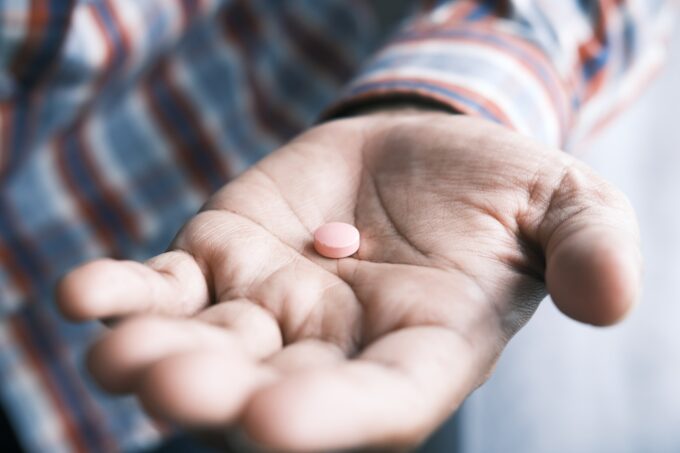Moderate alcohol consumption, no matter if it is beer, wine, or spirits, is generally not harmful to health. Unfortunately, there are more and more people who cannot resist this vice, and consuming it becomes a daily habit. Very fast excessive consumption of alcohol leads to addiction.
What is alcoholism?

Source: medicalnewstoday.com
Alcoholism is a chronic disease characterized by a tendency to drink more than intended, unsuccessful attempts to stop drinking, and to continue drinking despite harmful social and professional consequences. It is one of the most widespread diseases of envy and is the cause of death in 2.5 million people. Today, 3-5% of the total population in the world has a problem with alcoholism, ie 10 to 15% of the adult population (10% of men and 3-5% of women).
In addition to being addictive, alcohol causes many damages to the body – damage to the nervous system (mental deterioration, forgetfulness), damage to the cerebellum (imbalance), damage to peripheral nerves, damage to the digestive system, alcoholic epilepsy, caries, alcoholic cirrhosis of the liver, cardiovascular diseases, and so on. Attitudes towards drinking are formed already in childhood and early adolescence, and very often according to the model of identification with loved ones. Alcoholism as such is a familial disease.
Alcoholism is a disease that does not occur all at once, but gradually and for a long time is not noticeable to the environment and the individual himself. By constantly drinking alcohol, a person develops alcoholism slowly but surely. Although many alcoholics are aware of their problem, abstinence is something that does not work for everyone. It just so happens that the need for alcohol is greater and they just can’t resist without professional help.
How to cure addiction?
Alcoholism is a treatable disease, but it takes a lot of time and patience. There are various approaches to treating this addiction, and very often combined methods need to be applied. In any case, professional help is necessary.
Abstinence

Source: news.yale.edu
The most important point of treatment is abstinence, abstinence from alcohol consumption, but before that, it is necessary to make a complete examination and treatment of the patient in order to establish existing diseases and disorders that could complicate abstinence. A person who does not have a developed alcohol addiction may decide to drink just one beer and stop there. A person who has an alcoholic past is unlikely to be able to do this. After one beer, that person could easily continue drinking. Therefore, alcoholics should maintain strict abstinence.
Alcoholics Anonymous Club
This can be very helpful to an individual, as it is important for that person to know that he or she is not alone in the world facing this problem. It often happens that the family, no matter how much they wanted to help, does not understand this type of problem. Therefore, talking to someone “similar” is very healing.
Drug treatment

Source: unsplash.com
Sometimes an alcoholic can benefit from taking medication to avoid drinking alcohol. There are medications that can cause arrhythmia, discomfort, nausea, and sweating if alcohol is consumed after them. These unpleasant and sometimes possible dangerous reactions last 1 to 3 hours. Due to the strong response to treatment-related alcohol, this drug should only be given to those alcoholics in the treatment process who really want help and who want to work with a doctor and treatment counselors.
Medical center for the treatment of alcoholism
One of the most difficult but also the most effective methods of treatment is definitely staying at a rehab clinic. No matter how difficult it was for the patient and his family, rehab clinics achieve good results because they are professionals trained to help. It is also about combined methods, that is, combining medical devices, medications, conversations, and physical activity. Only after that, patients stop feeling the need to consume alcohol. Visit medicomente.com to find more about it.
Alcohol Rehab in Birmingham: A Path to Recovery
How to recognize that someone needs help?

Source: aionrecovery.com
Alcoholism in the family is one of the most common sources of family and social problems. It is the family that is the first to recognize changes in behavior and that can notice the first signs of alcoholism long before the person has the problem. At this stage of alcoholism, the alcoholic does not yet have any serious health and social difficulties. But, he is already ill (addicted to alcohol) and if he does not start treatment, there are severe health and social problems of the alcoholic himself, and family members suffer from various mental disorders.
Signs of alcoholism include lack of interest in family members and loved ones, skipping commitments, shaking hands (especially in the morning), difficulty concentrating, waking up with a frequent headache, morning sickness, and so on. It is important to note that an alcoholic does not behave so intentionally and because he is a bad person, but because he is addicted to alcohol. Addiction is determined by his behavior, not common sense.
Alcoholism has also progressed if you notice that person reaching for alcohol to cure anxiety, anger, or frustration.
Addiction is not a small thing and it is not easy to get out of it if there is no good support and initiative. Alcoholism in the family states that all members who need to support the patient instead of turning their backs are included in the treatment. One good way to help is abstinence from alcohol by all family members.
Final thoughts
Society is tolerant of alcohol consumption because drinking alcohol is an integral part of our culture. Alcoholism is a treatable disease! This means that it is possible to help the alcoholic and his family get out of this vicious circle.
In the treatment and rehabilitation of alcoholics, the following are used: pharmacotherapy (drugs for the purpose of detoxification), psychotherapy (with the aim of accepting the illness and coping with the consequences of drinking), social rehabilitation (therapeutic community, family therapy). Unfortunately, there are no natural methods of dealing with addiction. At least not the ones that are completely effective.






